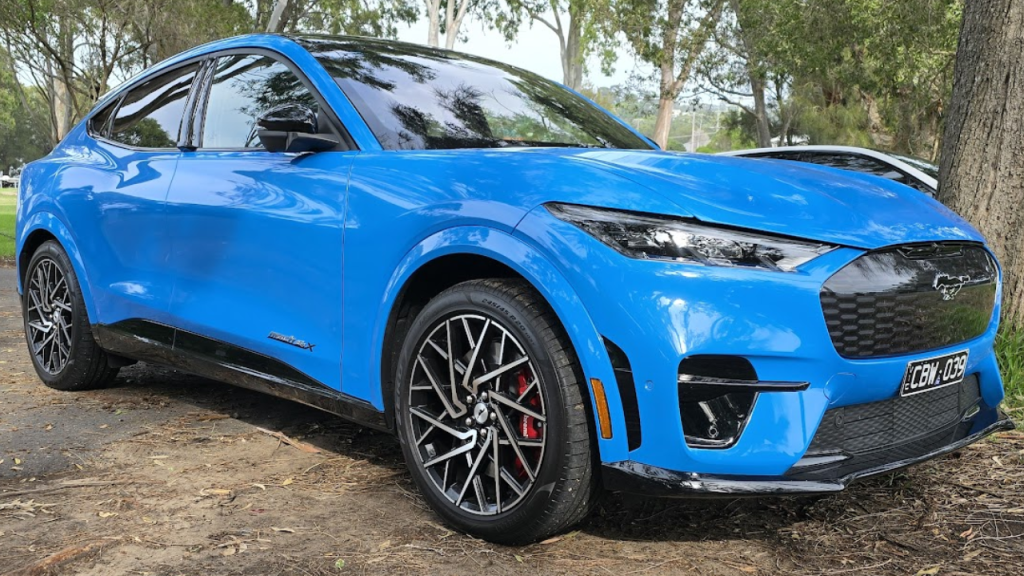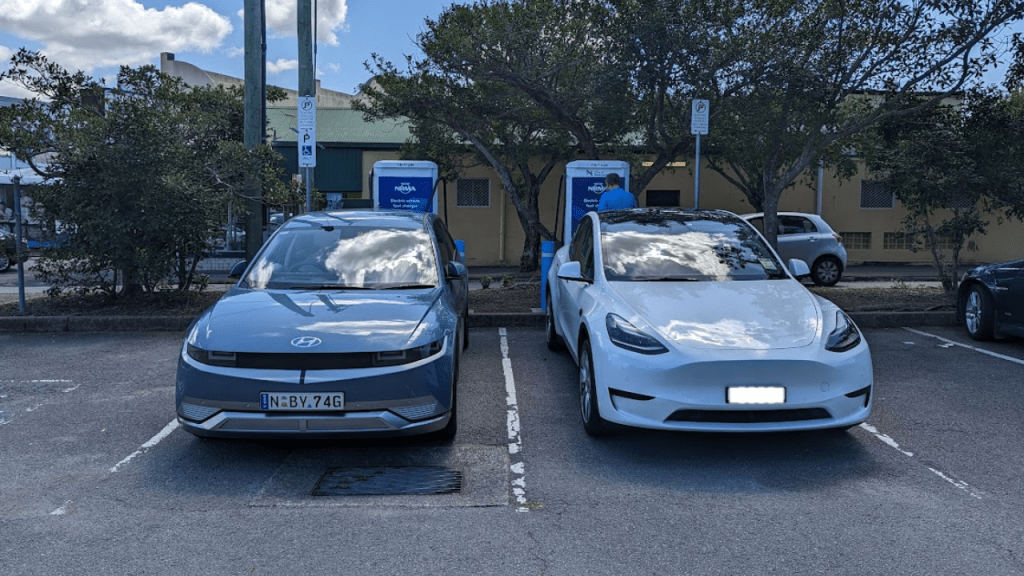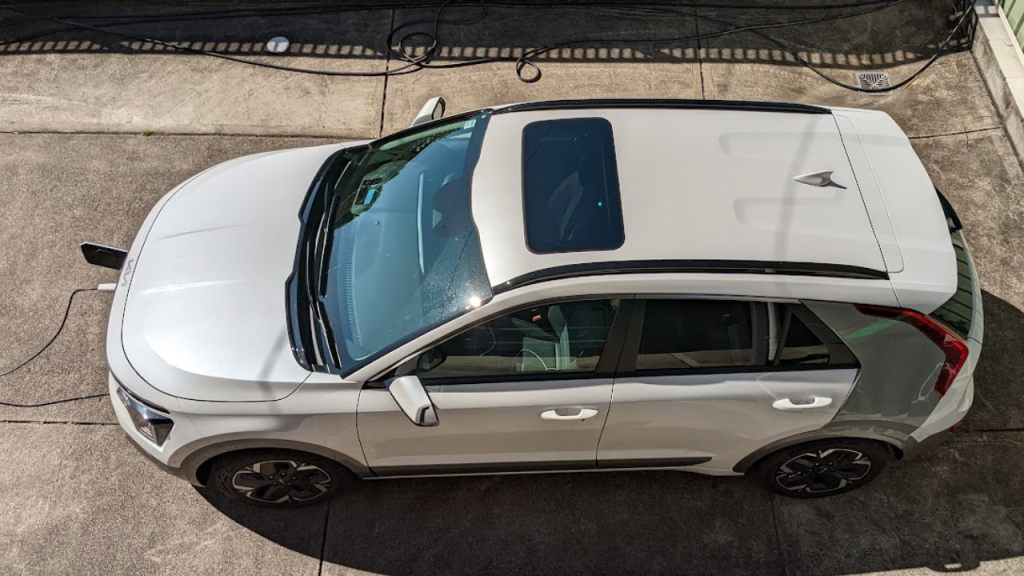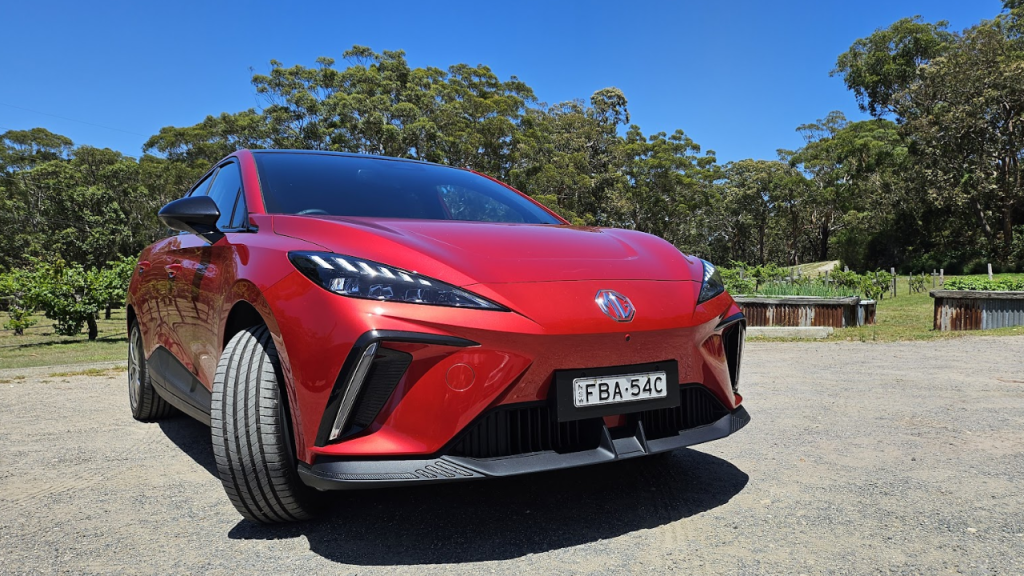I crossed a milestone this week when publishing my review of the Abarth 500e, I’ve now reviewed 25 Australian EVs over the past two and a bit years.
In celebration, I wanted to share the things I’ve learned in that time, in celebration and analysis.
I’ve had a tonne of fun with each of the cars that I’ve reviewed. This started with the Polestar 2, which went on to be my favourite EV of 2022. I’m thankful that Polestar came my way with the review when I started, and that my editor at the time allocated the review to me because it allowed me to start building out a niche in the space.
It also gave me inroads into analysing the emissions standards that are coming into effect in Australia soon, and critiquing the nature of the rollout of EV chargers across Australia. This technology represents a monumental shift in not just what everyday people drive, but also how they drive them, and I’m so happy to have been able to provide analysis on this.
So, let’s not beat around the bush any longer. Here are the 25 things I’ve learned after reviewing 25 EVs.
1. You need to think outside the (Tesla) box
Tesla, for the most part, makes great cars and has the best charging network across Australia, no question. When comparing the three Teslas I’ve reviewed (the Model Y, Model Y Performance, and Model 3 2024) to the other 22 cars I’ve covered however, I’d encourage you to consider alternative EVs – particularly if pricing is a concern and you don’t want to go higher than $45,000.
The Model 3 and Model Y are fabulous cars that are, at the time of writing, priced very competitively against their closest rivals, but the options from Volvo, Polestar, Hyundai, Kia, and even Ford now are so worth considering, especially if you want a closer to home feeling for your car. For as groundbreaking as a Tesla interior may look, it can be a bit daunting for some drivers, especially for the lack of an instrument cluster, and reliance on a subscription service for basic features, with no Apple CarPlay or Android Auto.
2. Infotainment matters
It’s with scorn that I tell you that the infotainment system on offer in a car should be carefully considered when buying a car. Hands down, the Polestar 2 and Volvo XC40 offer the best infotainment systems I’ve used in an EV so far, down to their reliance on Android Automotive (not to be confused with Android Auto), but there are also some underwhelming systems out there that I’m not so fond of particularly from Peugeot, BYD (at the time of review), and Nissan.
3. Buttons are still king
The pet peeve I have with most electric cars is that they do away with buttons. I’m never going to let go of this. Having a tactile, affirmative response from a physical switch when enabling, disabling, or adjusting a setting, will always trump a touchscreen or touch-sensitive buttons. Having that physical feeling gives you so much more confidence behind the wheel, and it allows you to confidently keep your eyes on the road without a system distracting you. Like touchscreens all you want, but real buttons are still important.
4. Frunks are more inconvenient than cool
We all get a bit of joy out of frunks; extra storage spaces under the bonnet of the car, allocated from space that would previously have gone to the engine in a combustion engine car. However, in my time with so many EVs, I can’t say that I actually use them all that much, and will actively go out of my way to not use them. For most cars, you still need to pull a lever or press a button to unlock the bonnet, which makes it inherently less accessible than, say, a button-operated tailgate. It’s no surprise whenever I get an EV in for review that simply doesn’t have a frunk – I can’t imagine that many people actually using them.
5. Keep DC in mind
Across both cheaper and luxury-end EVs, maximum DC charge capacities (which you can think of as rapid public charging) are often inconsistent. The lowest DC capacity, ie speed, you’ll come across these days is 80kW, which comes on the BYD Atto 3 and the GWM Ora, however even higher-end cars like the Ford Mustang Mach-E cap out at 150kW. Simply put, the higher the DC value, the faster your public charging speed will be on a sufficiently powerful charger.

6. Luxury is complicated
If BYD, MG, and GWM have done one thing, it’s change the perspective of ‘luxury’. Features like heated steering wheels, electric seating, sunroofs, and enhanced driver assistance tools are now available at more acceptable price points than ever before. Between a cheap and an expensive EV, the lines are blurred in terms of the extra features you could get.
7. Most prices are too high for most people
The classic catch-all argument among EV enthusiasts is that, although EVs are more expensive, owners will save money in the long term from lower servicing costs and lower running costs (electricity over petrol). This is true, however, I find it to be a fickle argument, because those savings are unattainable if you can’t justify a large purchase in the here and now. This leads us to…
8. We’re still waiting for a Camry competitor
There is about a $18,000 difference between the cheapest petrol car and the cheapest EV in Australia, which on its face might not seem like a dealbreaker – however, cheaper end cars like the Toyota Camry, Toyota Corolla, Kia Cerato, and Kia Picanto are still vastly more practical for driving long distances. EVs might be the winners in the city, but when you can refuel petrol cars so much quicker, and travel longer base distances with them than most EVs, then it’s an easy argument at the cheaper end, where buyers simply need something that works, right?
9. If it’s not reducing emissions, then what’s the point?
From the get-go, my approach to EVs has been from an environmental standpoint; to swap out objectively more harmful technologies like petrol cars, and swap them with more efficient electric variants. However, when we start to look at bigger EVs, such as the Cybertruck and the GM Hummer EV, it’s difficult to bridge gauge just how beneficial these things are for our planet. More efficient, yes, but also much more complex to build, and reliant on much greater quantities of lithium.
Thankfully these cars, and similar models like them, aren’t coming to Australia just yet, but I can’t get over how even in Australia, the marketing of many EVs put the environment in the backseat, and instead focus on better driving experiences. It’s important that these cars are marketed as such to reach a broader interest range, but environmental concerns should be the north star of all of this. If not, why are we even bothering with a technology that’s proving expensive to develop?
10. Range is rapidly catching up
In 2022, when I started reviewing electric cars, the WLTP-rated range of Australia’s cheapest EV (the then MG ZS EV) was 320km. In 2023, it changed to 350km, with the MG4 Excite 51. Similarly, the longest-range EV in Australia at the time of writing is the 2024 Polestar 2 Long Range Single Motor, at 655km, which jumped from 542km on the previous model. You’ll find similar improvements across all types of EVs, but overall, range is improving year-on-year. It’s just probably not where it needs to be for you to make a purchase just yet.

11. WLTP is a good indicator, but don’t trust it
As much as I can laud electric cars for their improvements on range year-on-year, the figure that we apply to electric cars to estimate range (WLTP) isn’t a perfect system. You’ll see range drop drastically when driving on the highway, but improve when driving in the city, we have the perfect example.
I’ve taken almost all of the EVs I’ve reviewed for highway drives, and even the longer-range models would have a bit of a weakness on highways. Under the right circumstances, they can be quite practical. Under the worst circumstances, you could be nearing battery depletion and needing to call for help (it almost happened to me).
12. Costs are rapidly going down
In 2022, the cheapest new EV cost $44,990 before on-road costs. The next year, this dropped to $38,890, and in 2024, it is now $36,990, with the GWM Ora. The costs are rapidly dropping, but from the outlook, based on what cars we can see coming in the foreseeable future, it’s difficult to tell if a new model will bring prices any lower. All three of the cars linked above have had their prices adjusted for 2024 to bring them down by thousands of dollars. I’d like to imagine that, if costs can come down another $10,000, then I reckon we’ll be at a comfortable breaking point for many consumers to start switching to electric.
13. Japan has a lot of catching up to do
The few Japanese electric cars that you can buy new in Australia at the time of writing are premium Lexus models, the Nissan Leaf and the Toyota BZ4X/Subaru Solterra. While these cars are all fine, the cheaper two have significant drawbacks compared to similarly priced cars, especially the Leaf, as the only EV in Australia that uses the CHAdeMO plug. It’s genuinely a shame that Mitsubishi and Honda specifically haven’t released local models that can properly take Tesla on; they’ve released hybrids and PHEVs, but they’re avoiding electric in Australia like the plague. I’m worried that at some point, the costs of electric cars will be low enough to encourage budget-minded drivers to switch from Japanese options, and that these companies will then ostracise lifelong fans.
14. Hydrogen is a red herring
Don’t mistake me for someone who is so far down the EV rabbit hole that alternative technologies look bad by default; I am all for exploring anything that will keep our planet from burning. When it comes to hydrogen, however, it’s difficult to analyse the technology through any lens that isn’t immediately a “hey, look over there” situation. It’s objectively more expensive and complicated to produce hydrogen than electricity, and it’s difficult to take these factors at their face value and think it’ll be better for consumers by extension.
15. Public charging sucks, there’s no other way to say it
The experience you get with public chargers is not designed for rapid uptake. In Australia, the arrangement reeks of startup energy, where the most efficient way of getting users in and out has been put in place, and problems are extremely common. I don’t like having a separate app for every different charging network installed on my phone, and I especially don’t like having to wait in queues to then wait for my car to charge over half an hour. Call it a ‘me problem’, I don’t care, but good luck encouraging less tech-savvy drivers to go electric when you take them to a popular public charger at midday on the weekend. Many of the chargers don’t even have roofs; do you understand how much of a bad look that is when everything surrounding this discussion is so expensive?

16. Service station layouts just make more sense
I can’t shake in my mind why we’ve abandoned the classic service station layout in lieu of unmanned, sad-looking standalone bowsers; usually in groups of two to charge two cars simultaneously, but often seen in numbers of up to eight chargers. Why not have a petrol station for just EVs? It brings the opportunities of new jobs, a place to rest, grab something to eat and use the bathrooms. This is much better than the current option of unsheltered charging hubs.
17. There’s still not an ‘EV for everybody’
Did you know that there is not a single 4×4 EV in Australia that you can buy new at the moment? There are models overseas, but even if such cars were here, it’s easy to head things off at the pass: range requirements, along with higher base costs and longer charge times generally put EVs in a case-by-case situation for drivers. Many drivers in cities, for example, would probably get a lot of benefit from an electric car, but it’s difficult to say the same for someone who, for example, lives in a regional town and travels hundreds of kilometres daily.
18. I’m sick of SUVs
In defence of the SUV, it’s the most popular body type for any car in the world at the moment, with the Tesla Model Y SUV being the most popular car in the world at the time of writing. But I’m so sick of them. For a while earlier this year, I just got bored of getting in and out of such large cars. Plus, I’m just so excited for when the small EVs start to really come out (hopefully they’ll be better than the 500e).
19. The savings on petrol are immense
Charging your EV at your home will save you so much money rather than charging it in public, or better yet, refuelling a petrol car. This point is difficult to gauge from a reviewer standpoint, but it’s no joke. As petrol prices continue to skyrocket, I can’t help but hand it to EVs on this point.
20. You don’t need to install a home charger (but at least think about it)
One of my close friends has two MG4s in his household, and my Dad and his wife have an MG4 in theirs, but neither of these households are thinking too seriously about spending thousands on a dedicated home charging box. To be honest, I can’t blame them. They’re not overwhelmingly expensive to install, and when paired with solar panels you could end up saving thousands more on travel, but most EVs come with a car-to-wall socket plug, maxing out at 2.4kW. The households I’ve mentioned have found this to be sufficiently useful when charging overnight, so it makes me think about how much one needs to install a dedicated EV charging box. Installing one could be a massive money saver.

21. I just can’t love PHEVs
There are situations in Australia where a plug-in hybrid electric vehicle, a PHEV, will make more sense than an electric vehicle – especially if you need a range of up to 1,000km, however, the environmental benefits of a PHEV really only kick in voluntarily. You can reliably use a PHEV without plugging it in at all, which annoys the heck out of me, because why wouldn’t you just buy a non-PHEV or standard hybrid then? You’ll only be getting the true benefits of the car if you’re plugging it in to charge.
22. The battery replacement stuff is still being shaken out
I can’t get over how interesting things will be in 10-15 years’ time when EVs start to need battery replacements to remain good options for drivers. At the moment, such replacements are prohibitively expensive for many drivers, and the parts and facilities to allow for them are few and far between. For drivers and the environment alike, we need to ensure that, when the battery needs to be swapped, it can be done so accessibly and cheaply – because buying a whole new car instead is just wasteful, and if it’s not good value down the track, then second-hand buyers will be left in the lurch.
23. We can’t afford to slow down
CO2 emissions are going through the roof, ecosystems are entering states of disrepair, and at long last, we finally have emissions standards coming into effect in Australia, but it’s not enough. The transport sector in Australia contributes a significant amount of emissions, and unfortunately, the whole system reeks of wallet activism, where you can only unscrew the environment if you’re sufficiently wealthy.
24. This is bigger than cars
The climate crisis can’t just be solved by switching petrol cars to EVs. Under the most optimal conditions, sweeping changes to our livelihoods would need to be made to keep the planet from boiling and to keep animals from going extinct. A big part of this includes changing how we approach transport and a greater appreciation for mass transit. Sydney, Australia’s largest city, is designed for a positive mix of buses, trains, and cars, but even if all of the cars on the road went electric, the emissions that go into creating them are still immense, and the rubber of their tyres are still entering fragile ecosystems. I love cars and I always have, and I love the feeling of driving electric cars and the excitement of new technologies. But we can’t continue to commit the sins of a petrol-dominant world as EVs come in.
25. Do I have a favourite EV?
At the time of writing, my favourite EV remains the MG4, for its broad range of models across several price points, and the great feature packages you get across them. This is bound to change as more EVs are released, but I’m still in love with the sensible electric hatchback, that offers a decent DC charge speed for the price, a good battery range offering at various price points, and overall, a brilliant driving experience, being the cheapest RWD in Australia. Broadly speaking, I recommend it to most people who ask.
Thanks for reading my reviews and articles, these 25 EVs have been a blast to drive. We’ve got the BYD Seal in for review next, so stay tuned for more!

Image: Zachariah Kelly/Gizmodo Australia
